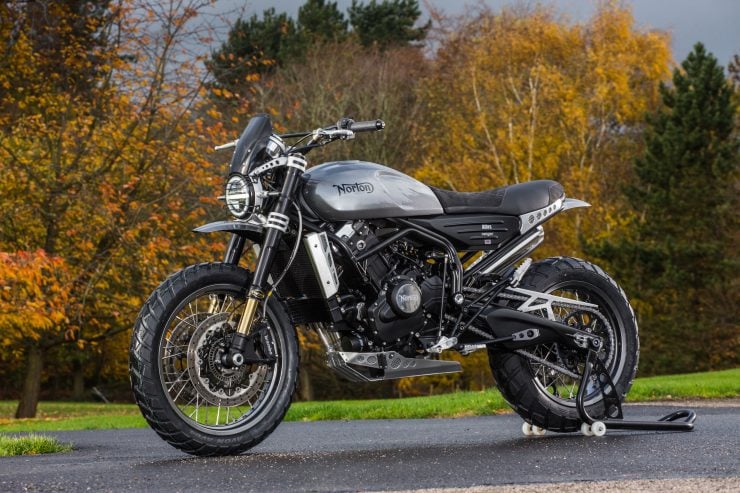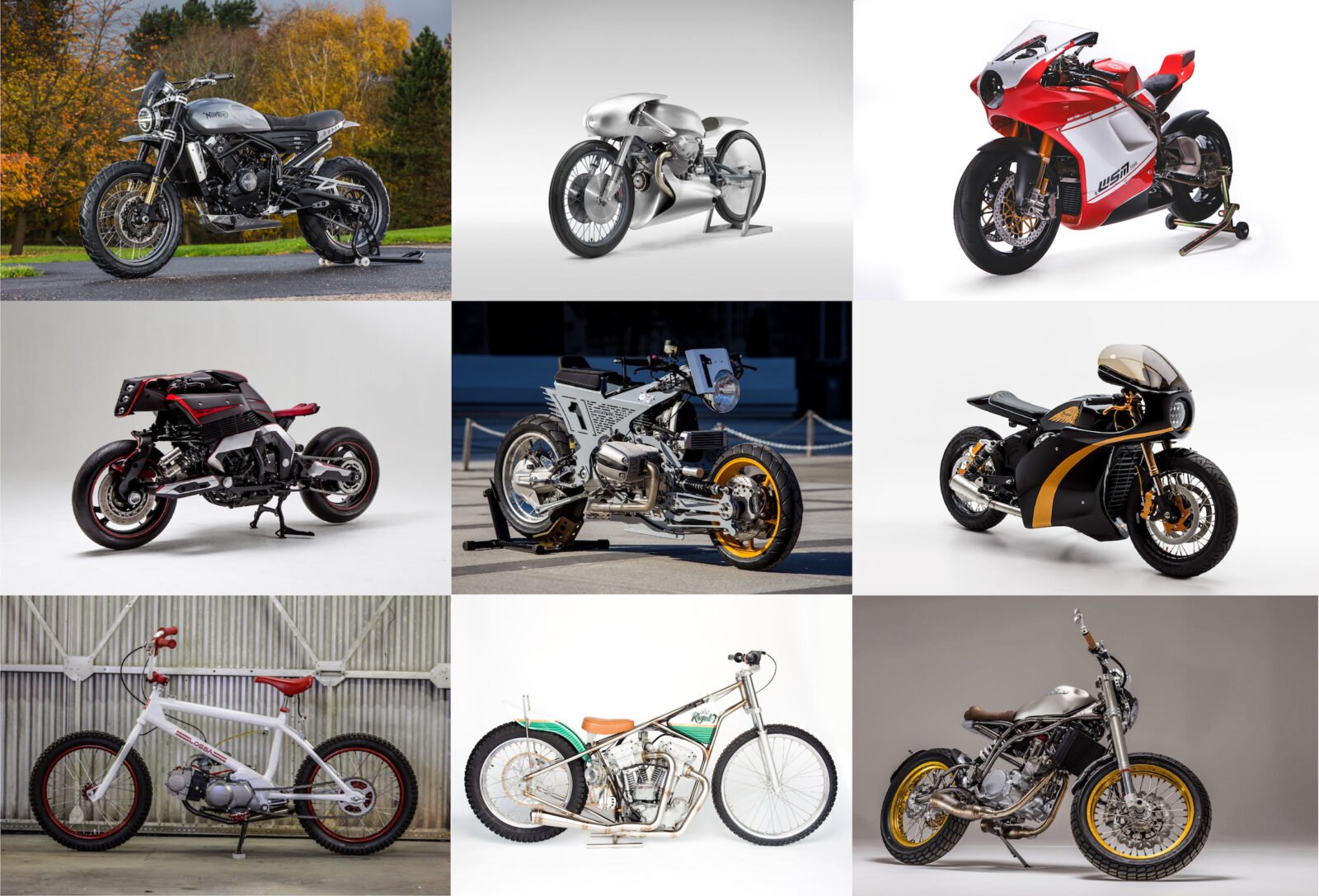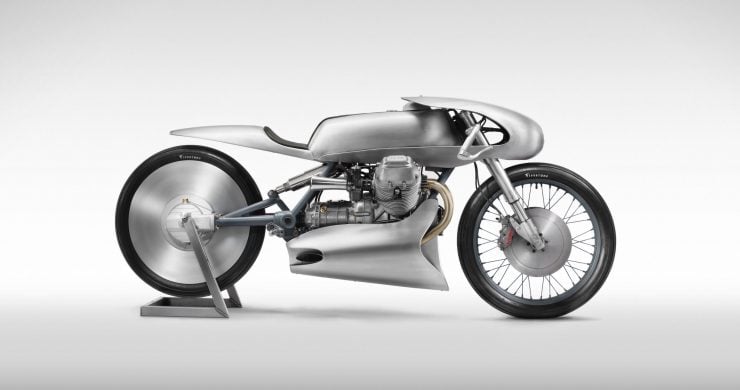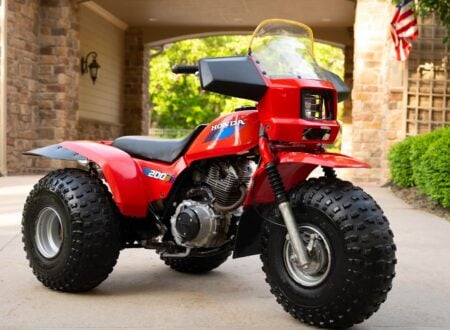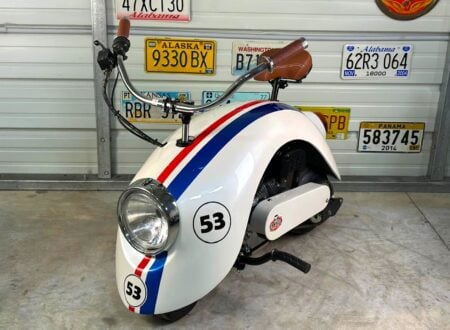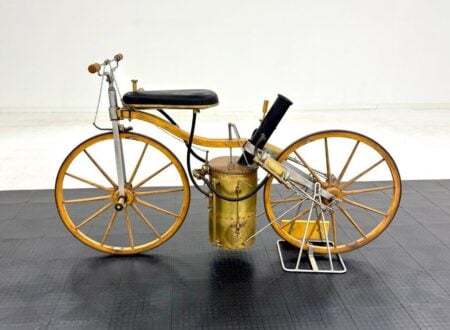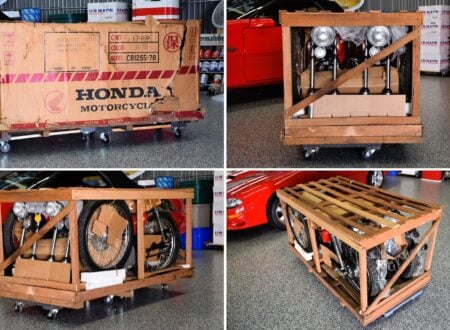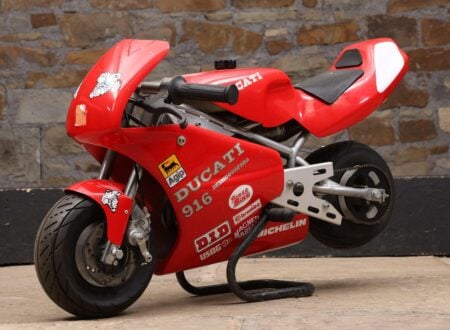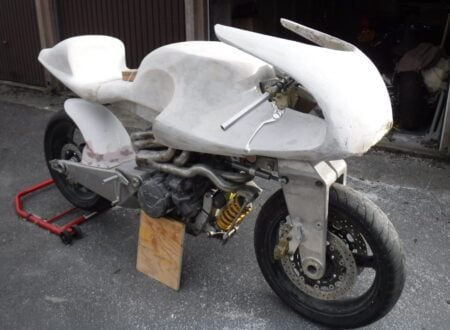This is our annual collection of the most popular motorcycles on Silodrome for the year – this list is compiled in reverse order based on which motorcycles got the most visits on Silodrome over the past 12 months.
There are more than a few surprises on the list, there are a few bikes missing that I would have expected to be here, and there are a couple that are sure to be controversial – but these are the most popular 18 of 2018.
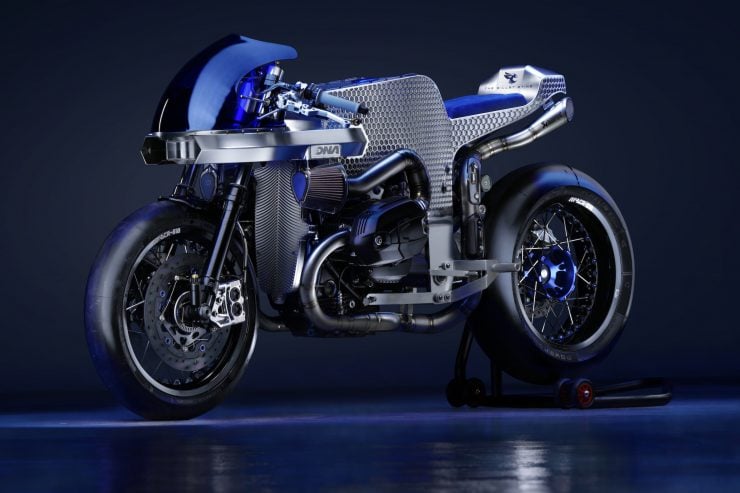
#18 – The Billet Sting – A Honeycomb Alloy Custom BMW R nineT
The Billet Sting is a custom BMW R nineT with a bespoke honeycomb alloy chassis machined by CNC in 10 individual pieces, before being carefully welded together on a jig to create one of the most eye-catching custom motorcycles we’ve seen in recent memory.
Dino and his son Mario spent weeks carefully designing the Billet Sting with a hefty dose of inspiration from Dino’s race bike from the 1980s – an 80cc two-stroke with a bespoke monocoque aluminum alloy frame that finished every race it was entered on the podium for three years straight.
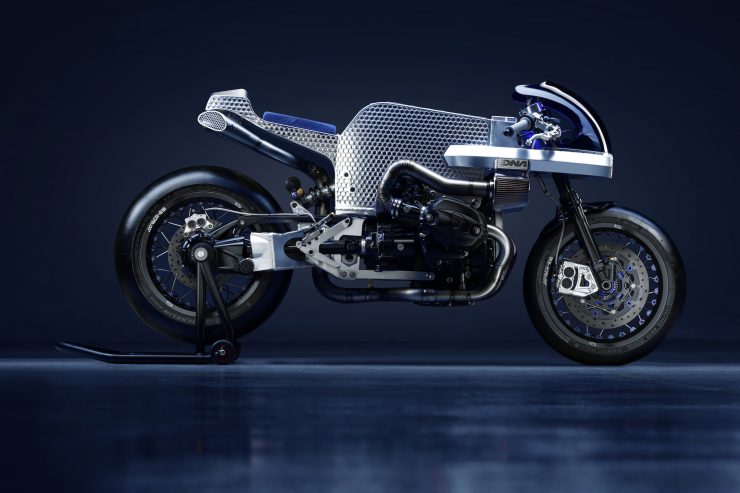
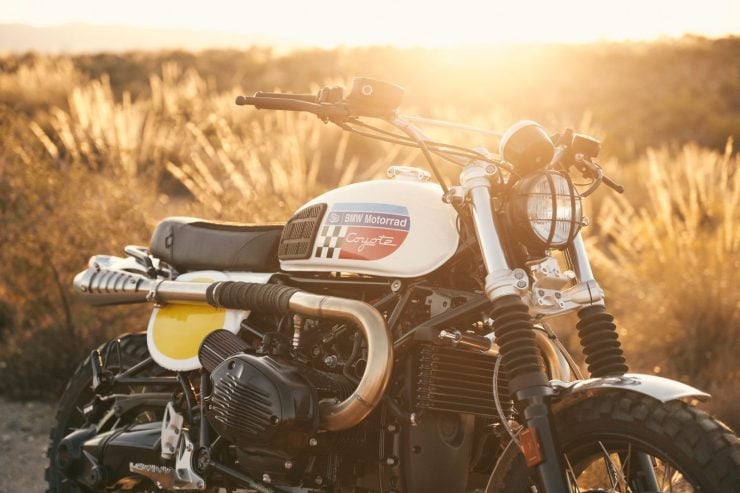
#17 – The Fuel Motorcycles Coyote BMW R nineT Urban G/S
The BMW R nineT Urban G/S is a member in the R nineT model range designed to evoke the spirit and styling of the iconic 1980 BMW R80 G/S – the motorcycle that launched the modern adventure bike genre and rocketed to icon status when it won the 1981 Paris-Dakar Rally with Hubert Auriol in the saddle.
The Urban G/S you see here was re-worked by the Barcelona-based team at Fuel Motorcycles at the request of BMW Motorrad. While the factory-original bike does have moderate off-road ability (think fire roads and forest trails), the guys at Fuel wanted to up the ante, and create a modern dual sport bike with more pronounced off-road ability, and styling that wouldn’t look a whisker out of place on the start line of the 1981 Paris-Dakar.
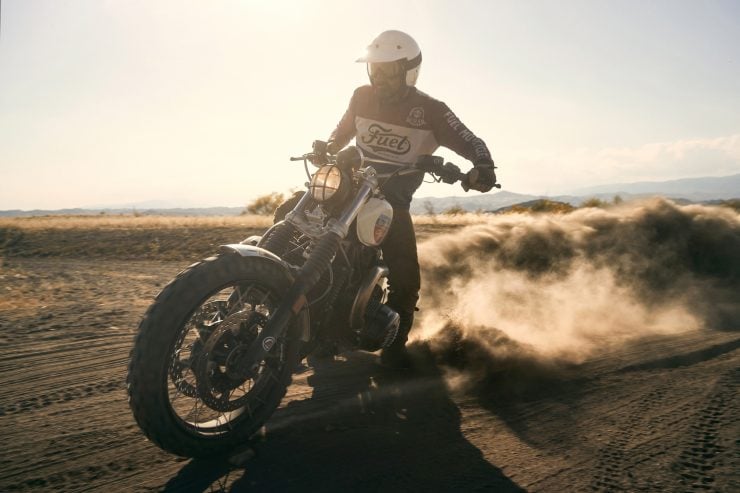
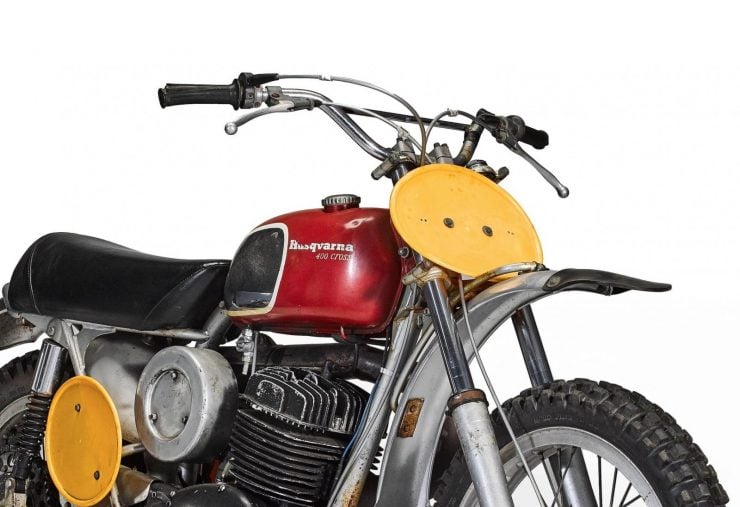
#16 – Steve McQueen’s Original “On Any Sunday” Husqvarna 400 Cross
This is the Husqvarna 400 Cross ridden by Steve McQueen in the seminal motorcycle documentary On Any Sunday – undoubtedly one of the most important motorcycle films ever made. The closing scene of the documentary famously features Mert Lawwill, Malcolm Smith, and movie star Steve McQueen riding over sand dunes and out across a beach at sunset.
Though better known for his appearances in feature films like The Thomas Crown Affair, The Great Escape, Bullitt, and Papillon – Steve McQueen was a devout racer on two wheels and four. He famously paid for acting lessons early on in his career using his winnings from motorcycle racing, and his salary from a Greenwich Village garage where he worked as a part-time mechanic.
McQueen met James Dean at this garage as the (already famous) Dean stored his Indian Warrior TT there, and the two men bonded over their mutual love of motorcycles. Some have speculated that it was James Dean who gave McQueen the encouragement he needed to seriously pursue acting over racing.
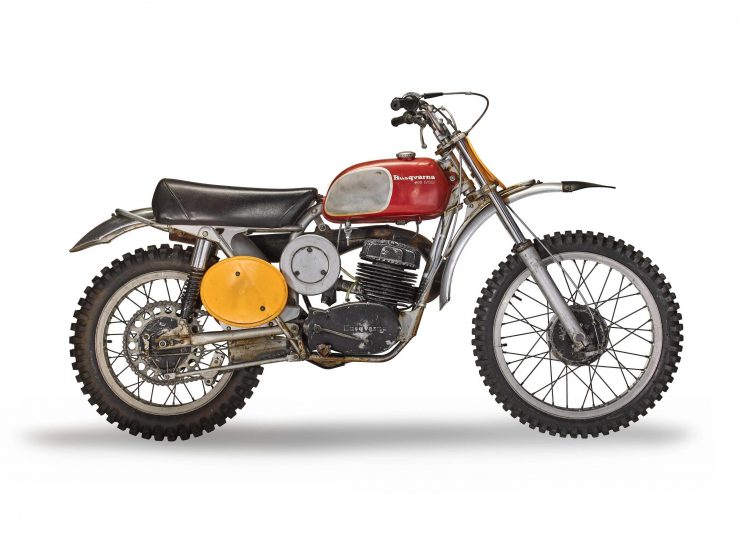
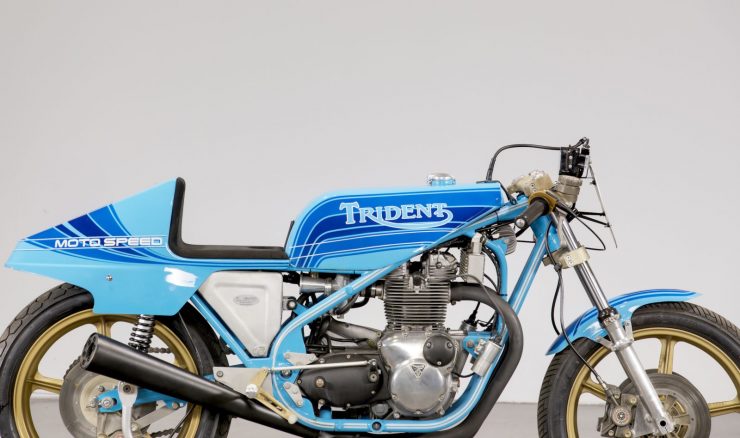
#15 – An Original Rob North Triumph Trident Formula 750 Racer
The Triumph Trident and its BSA Rocket 3 sibling were, in a way, a last hurrah for the previously globally dominant British motorcycle industry.
A racing effort funded on a shoelace budget was launched in 1970 to promote the 750cc triple being used by both Triumph and BSA.
Frame construction was contracted out to British specialist Rob North, he developed a chassis that was years ahead of its time – a perimeter frame with excellent rigidity, and top rails that run directly from the steering head to the swingarm pivot point.
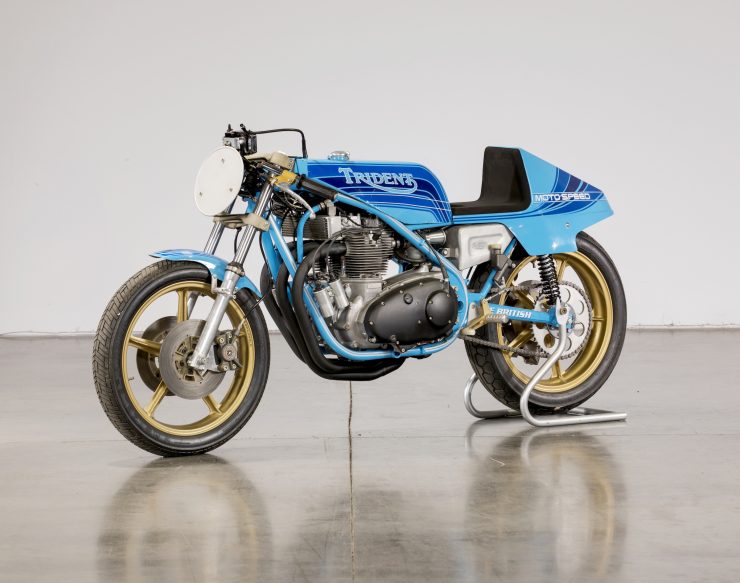
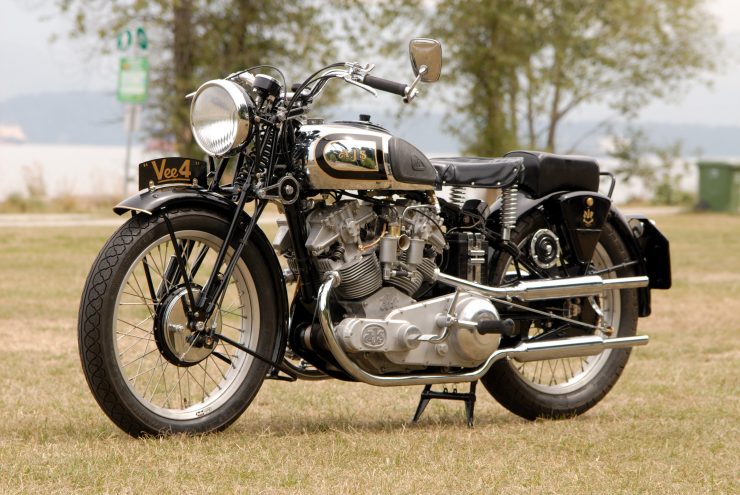
#14 – Resurrecting The Mighty AJS V4 From 1936
The AJS V4 was an advanced engineering effort undertaken by the British motorcycle company in the mid-1930s, the first prototype was intended as a road-going motorcycle and it was shown at the Olympia Show in 1935.
Vancouver resident Dan Smith is a machinist and a man deeply familiar with British muscle bikes – he owns a Vincent Black Shadow and a Vincent Series B Rapide which he rode all the way down to Tierra del Fuego and north into the Yukon territory.
Dan stumbled across an old engine drawing of the V4’s internals and did a little more research, uncovering a series of photographs and history on the famously advanced engine from before the Second World War.
Despite the original engine’s reputation for reliability, Dan rolled up his sleeves and set about building an entirely new AJS V4 from scratch. The project took him years and resulted in an engine with bespoke cast, machined, and fabricated parts throughout including staggeringly complex items like crankshafts, crankcases, and heads.

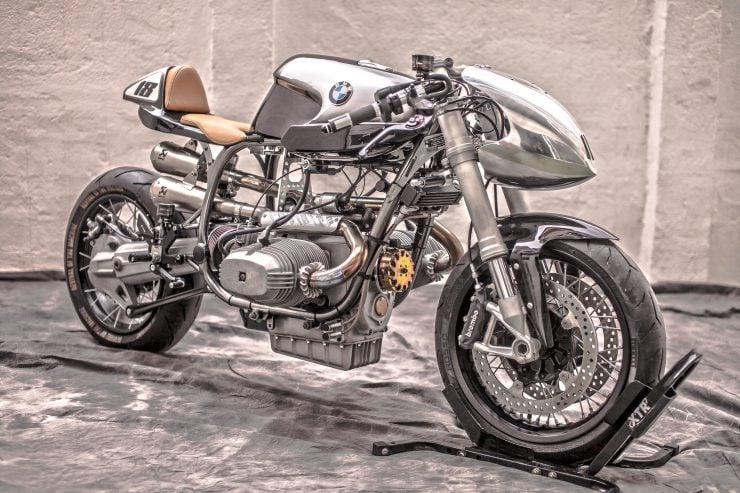
#13 – XTR Pepo Silver Bullet MKII BMW R100 RS Custom
The Silver Bullet MKII is the second coming of the BMW R100 RS Custom by XTR Pepo that took the moto-web by storm last year. The bike proved so popular that it was taken on a road trip to many of Europe’s best motorcycle shows, including The Bike Shed Show, Wheels and Waves, and the BMW Motorrad Days Festival.
After all this travel the original bike was looking a little worse for wear, it had covered significant mileage in all kinds of weather, so the team at XTR Pepo decided to give it a comprehensive rebuild.
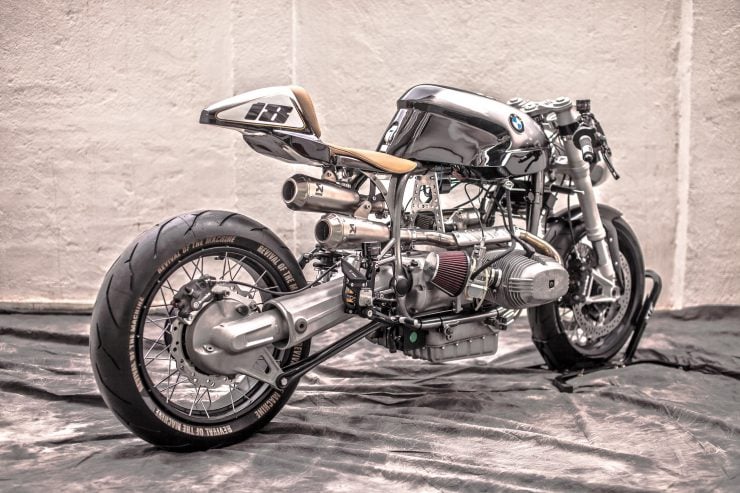
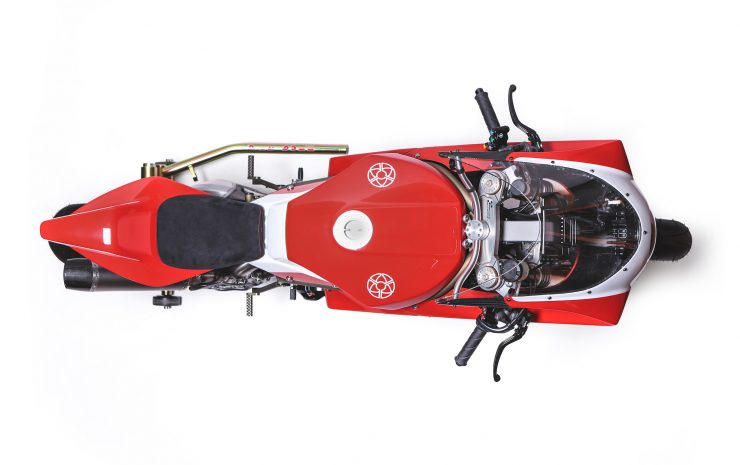
#12 – WSM SBK – A Bespoke Superbike By Walt Siegl
It was a natural progression from building bikes with Ducati two-valve air-cooled engines to finally including a high performance liquid-cooled four-valve Ducati engine to the WSM collection.
I wanted to build a completely new bike with a perimeter frame that allowed me to use both Ducati engine configurations: air-cooled 2-valve, and liquid-cooled 4-valve, with as much of the components built in-house as possible, and all other components of the highest quality available.
I did not want to ignore the trusty two-valve engine, because I, and many of my clients like it so much.
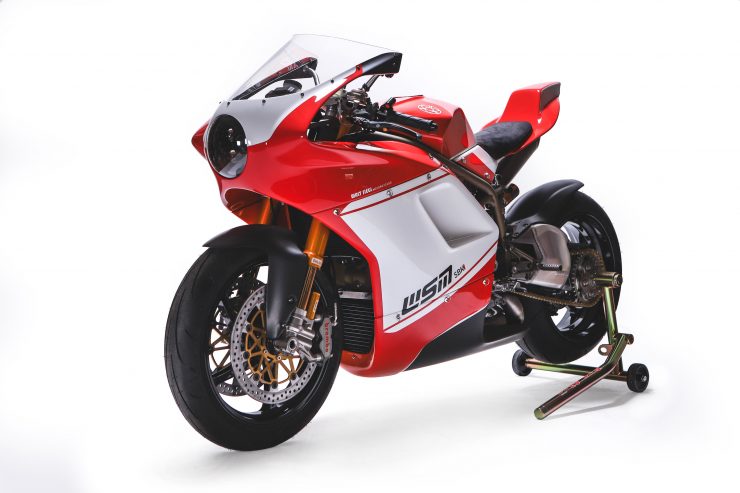
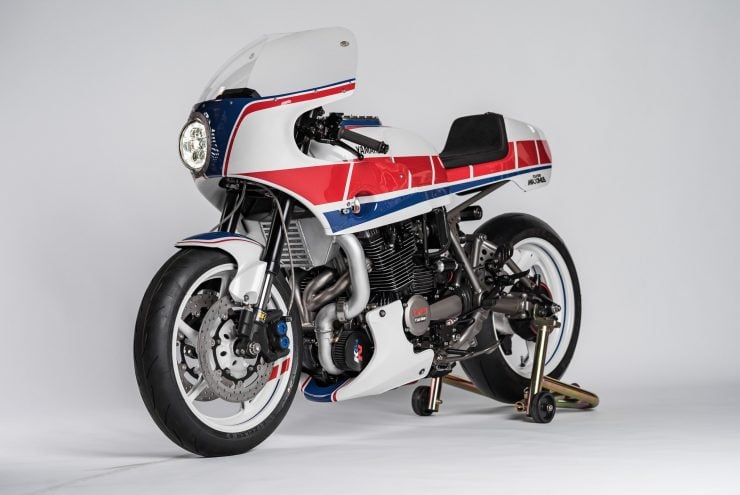
#11 – The Turbo Maximus – A 200 hp Turbocharged Yamaha by Derek Kimes
My goal was to keep the turbo assembly as tight and integrated to the bike as possible. I wanted it to look like the bike was designed originally to be turbocharged. You see so many turbo bikes with either the turbo hanging way out and or the charge tube is wrapped around the engine, an afterthought.
To avoid this, I picked a turbo (Borg Warner S1BG) big enough to give me my goal of 200 hp (on E85), but small enough to tuck in between the frame and front wheel. To hide the intake charge pipe, I cut a channel on the bottom right side of the tank so it could travel straight back from the intercooler hidden.
Above the turbo I have a custom fabricated Bell intercooler to cool the air down from compressing it. The problem with this it took the location of the oil cooler. Also, by placing the turbo so close to the frame, I didn’t have clearance anymore for the oil filter.
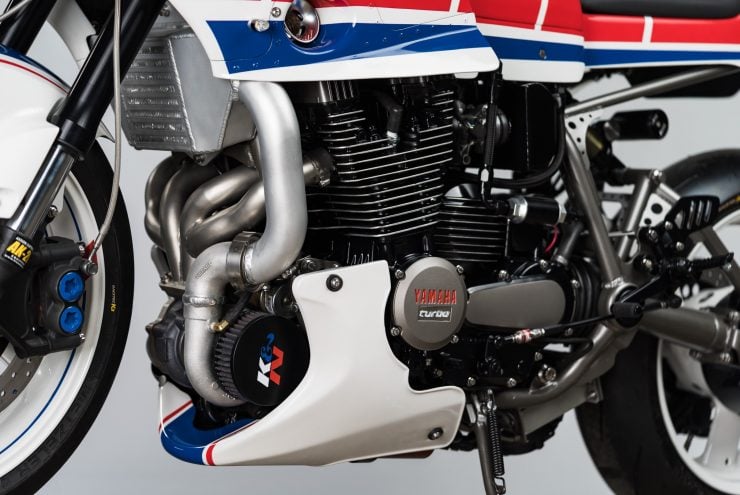
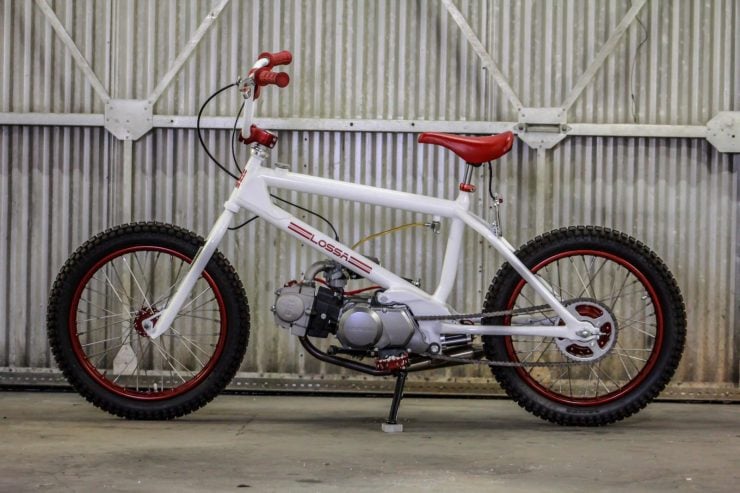
#10 – The Redline x Honda CT90 BMX Bike by Lossa Engineering
A while ago I was talking to my buddy about building a BMX-styled Honda CB350, super simple and clean, mags and colors that popped. Then one day while on Instagram I came across @Maru1Motorcycle from Japan and his pictures of a Honda Cub 50 he made look like a BMX bike.
I then realized that those type of Hondas are perfect for the build. I have always loved Redline BMX bikes since I was a kid, so I decided to build mine to resemble the Redlines of the 80’s. I chose to start with a Honda CT90, since I had 4 of them sitting at my shop.
I wanted this bike to be street legal too, so keeping the original CT90 VIN# was very important.
I started by chopping off everything on the frame but the motor mounts (where the vin# is located) and the head tube and bottom tube. Then I fabricated the complete frame from scratch with new tubing.
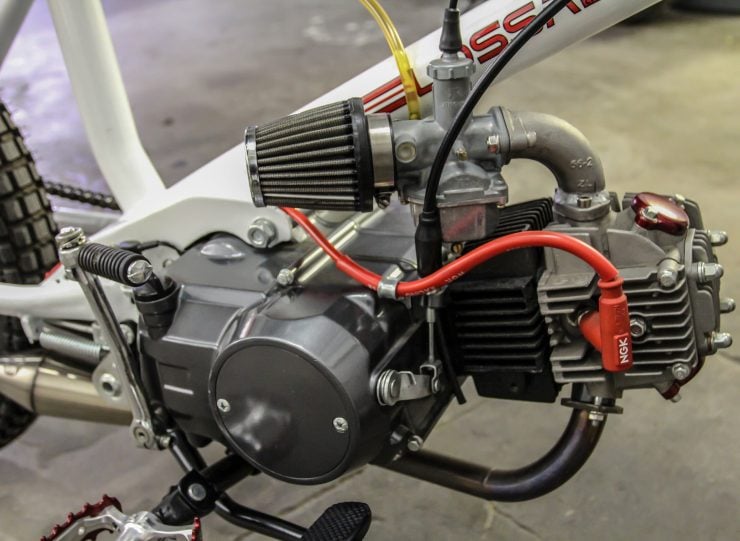
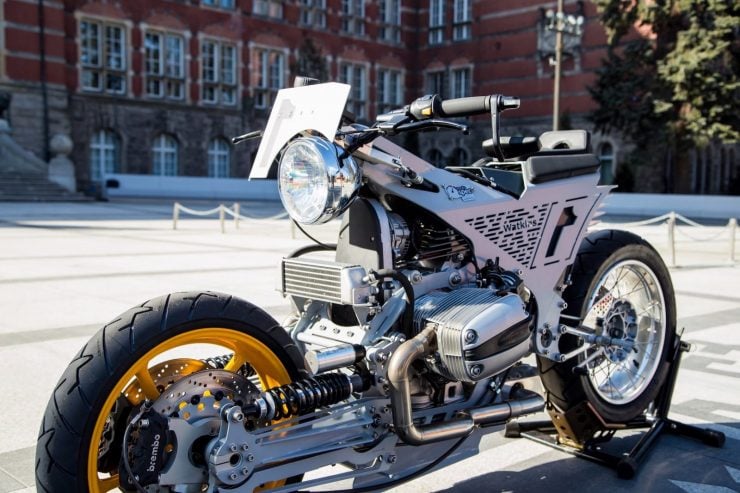
#9 – The Remarkable Watkins M001 – A Futuristic Polish-Built BMW
When you see the Watkins M001 for the first time you spend a good 5 minutes staring, trying to wrap your mind around it. It’s equal parts complex, unusual, and unfamiliar, almost as if a motorcycle from the Blade Runner universe was modified in the Marvel universe, before somehow exiting a wormhole and landing on Earth.
Despite its science-fiction-inspired appearance, the Watkins M001 was entirely built here in our universe, in the garage of a Polish engineer with a PhD in mechanical design, who works as a lecturer and researcher at the Gdańsk University of Technology, as well as heading the technical division of an industrial firm in Gdańsk, Poland.
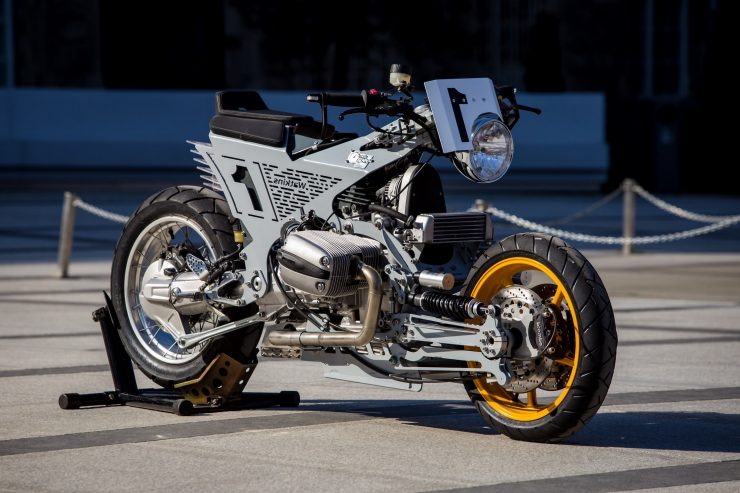
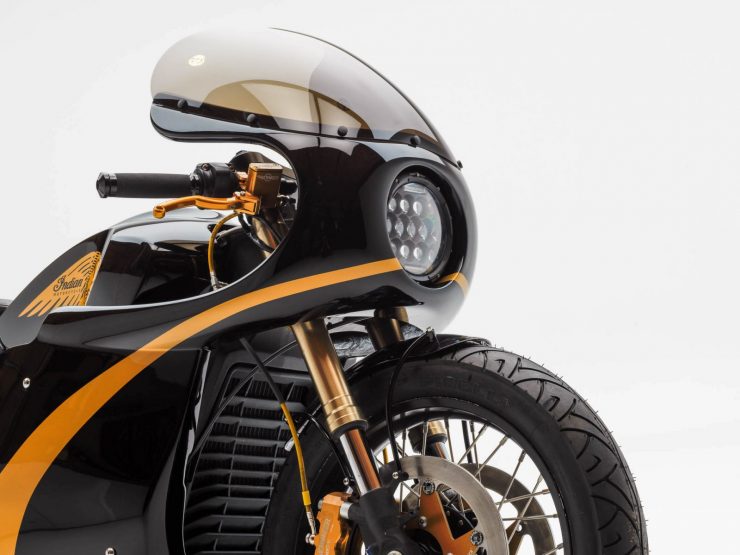
#8 – The Indian Scout Racer That PJ Grakauskas Built
When PJ Grakauskas was picked to build one of the three custom Indian Bobbers competing with mechanical engineer Christian Newman and NASA engineer Alfredo Juarez, he knew he had his work cut out for him.
PJ isn’t an engineer, he’s a shed-based motorcycle tinkerer based in Cleveland who entered the competition with Indian Motorcycles to win one of three brand new Indian Scout Bobbers, with $10,000 spending money to complete a custom build.
Once the Indian had been delivered to his 10′ x 12′ Ohio shed PJ set to work. By the time he was done he was rolling out what is quite possibly the single most beautiful custom Indian we’ve seen since the company’s return to motorcycle manufacturing in 2013.
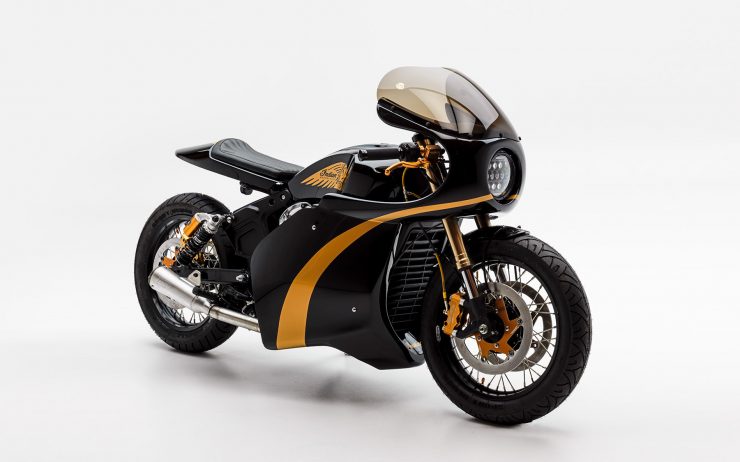
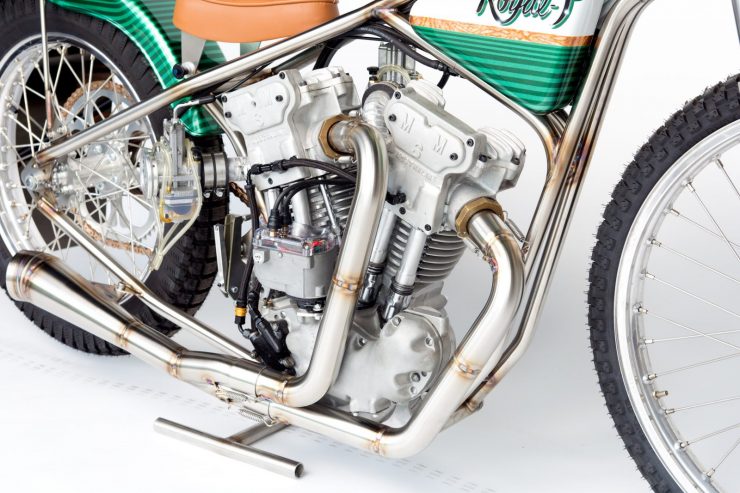
#7 – The 1967 Meirson Sprint Motor (MSM) V-Twin Speedway Bike
The Meirson Sprint Motor (MSM) V-twin prototype is an engine that you’ve probably never seen before. Just one was made in 1967 by a talented father and son team in Australia; Clarry and Allan Meirs – the name Meirson is a contraction of “Meirs” and “Son”.
The two men raced sidecar speedway bikes together with (father) Clarry on the bike and (son) Allan in the sidecar. They started out using modified JAP (JA Prestwich) engines, they began developing their own single-cylinder racing engines that quickly outperformed the more common JAP and Jawa engines.
The Meirson Sprint Motor was a prototype V-twin developed specifically to replace the Vincent V-twin they had been using in their sidecar speedway bike. To accelerate the development process they used a Harley-Davidson Flathead bottom-end, then developed their own cylinders, heads, pistons, and connecting rods. The valve train was sourced from an early-60s Coventry Climax Formula 1 engine, with JAP rocker arms.

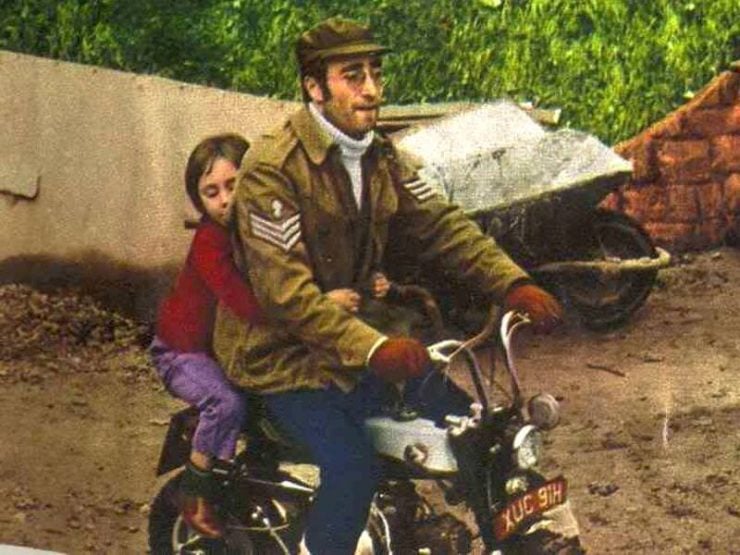
#6 – John Lennon’s Monkey Bike – An Original 1969 Honda Z50A
Tittenhurst Park is an original Georgian country house sitting on 72 acres London Road at Beggar’s Bush near Ascot. John Lennon and Yoko Ono lived there from 1969 till 1971, then sold the property to fellow Beatle Ringo Starr who lived there with his family until the late 1980s.
With 72 acres at his disposal, it’s likely that the little motorcycle got its legs stretched often, and one of the period photographs of John (as can be seen above) show him on the bike with his son Julian on the back.
John bought the Honda Z50A the same year he bought Tittenhurst Park, and sold it in 1971 when he sold the estate, likely using the bike for adventures around the grounds and collecting the mail from the front gate.
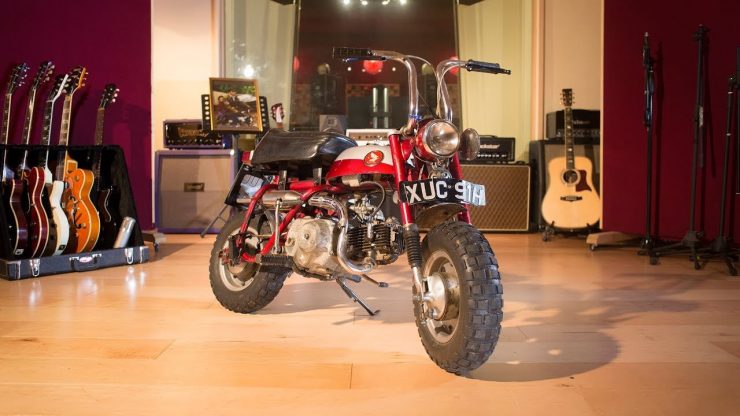
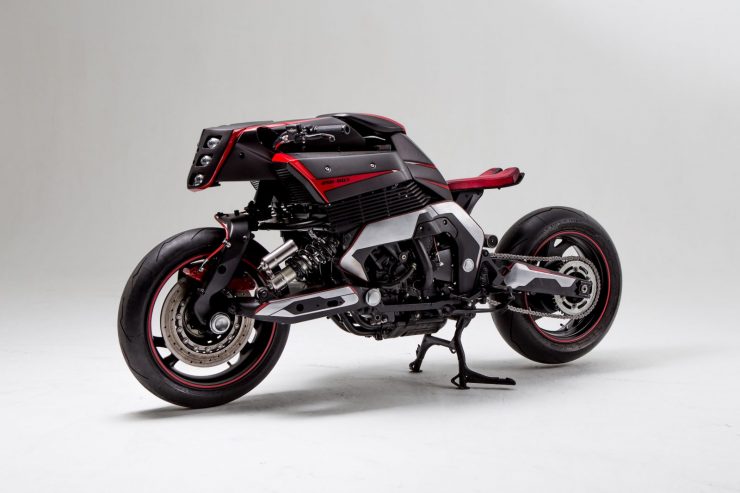
#5 – The JSK Moto Co. Custom Yamaha GTS 1000
The Yamaha GTS 1000 was released in 1993 with unusual forkless front suspension designed by James Parker, a Stanford University trained Industrial Designer with an innate engineering ability – which he used to develop oftentimes unusual motorcycles.
In 1971 when he ran a Hodaka dealership Parker created a 120 pound riveted-aluminum monocoque-chassis Hodaka racer, in 1975 he developed a rising-rate single-shock rear suspension, and incorporated it into a trellis frame design for a Yamaha 500 cc four-stroke single.
During this time he was racing RD350s at club level and riding for Motorcyclist Magazine’s endurance racing team.
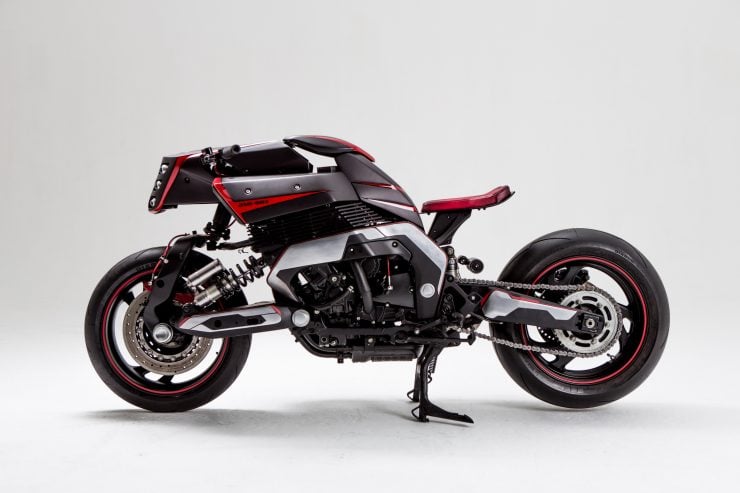
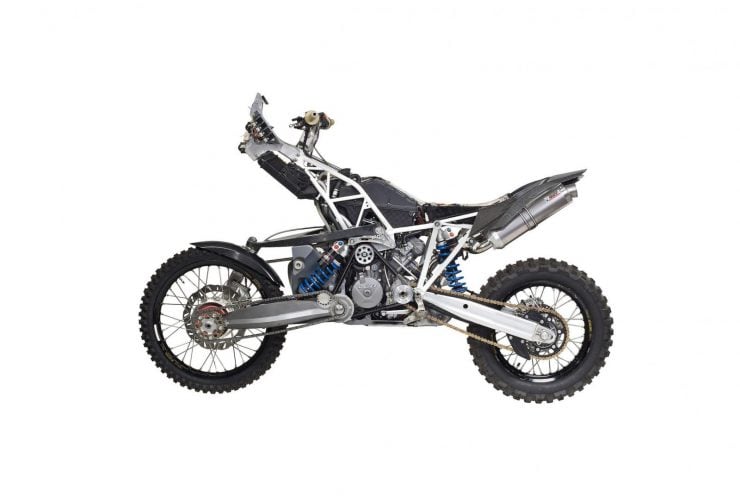
#4 – A Home-Built Kit To Convert The KTM 990 Adventure To Two-Wheel Drive
The idea of developing a home-built kit to convert the KTM 990 Adventure into a two-wheel drive motorcycle with hub-centre steering sounds difficult enough – but somehow also managing to reduce the weight by 40 kilograms compared to the stock bike sounds borderline impossible.
Despite the litany of difficulties associated with the concept, mechanical engineer Guido Koch of Projekt DT-A has managed it, and produced a fully-functioning example that he hopes to use to attract investors so he can make a consumer kit for KTM 990 Adventure owners to convert their own bikes.
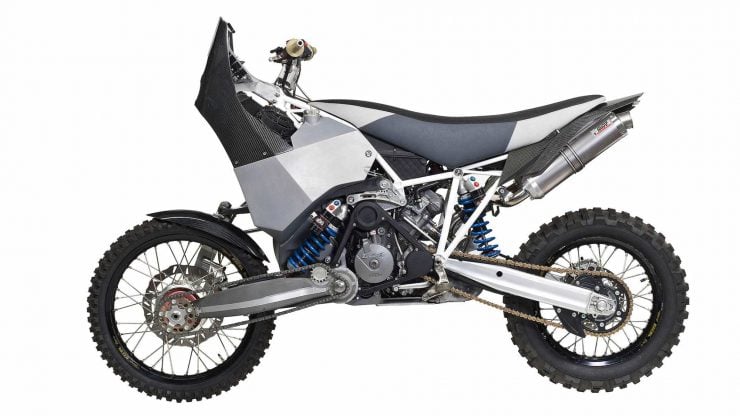
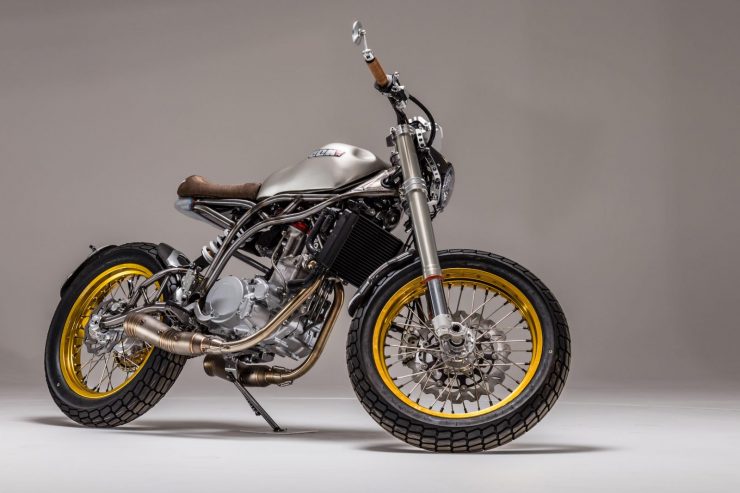
#3 -The CCM Spitfire – Possibly The World’s Fastest Selling Hand-Built Production Motorcycle
The CCM Spitfire was developed by an A-Team division within Clews Competition Machines nicknamed the SkunkwerX – a hat-tip to the legendary Skunk Works team at Lockheed Martin.
The Spitfire is very possibly the fastest selling hand-built production motorcycle in the world, when it was announced in 2016 with a limited run of 150 units it sold out in a week – with a third of the allocation selling out on the first day.
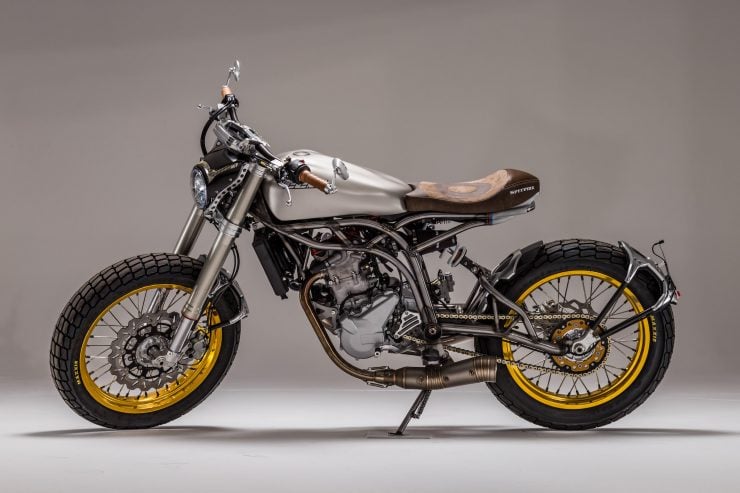
#2 – Death Machines of London Airforce Moto Guzzi
Designed in memory of Giovanni Ravelli: WW1 fighter pilot, motorcycle racer, and one of the founders of Moto Guzzi. Inspired by one of Giovanni’s biplanes and the Futurist movies of the time, Airforce has been released on the birthday of the aviation pioneer.
From the hand formed bodywork, to the aviation inspired chassis and wheels, Ravelli’s influence has shaped Airforce. In fact, pretty much every design decision began with ‘what would Giovanni do?’
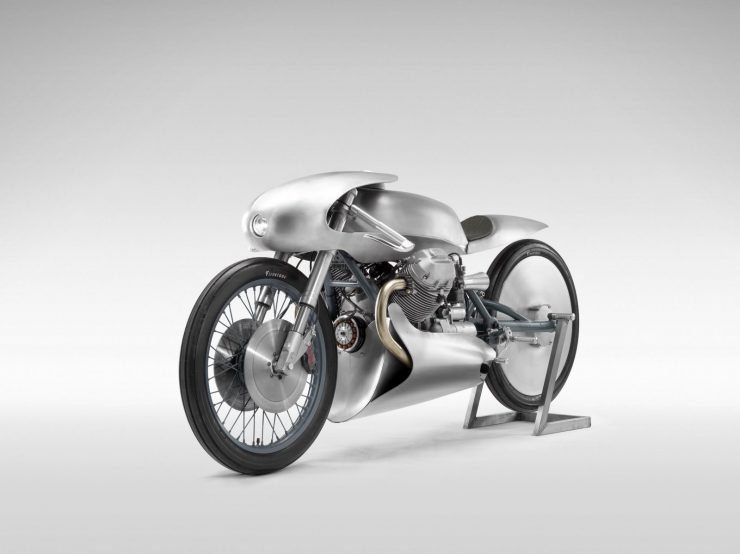
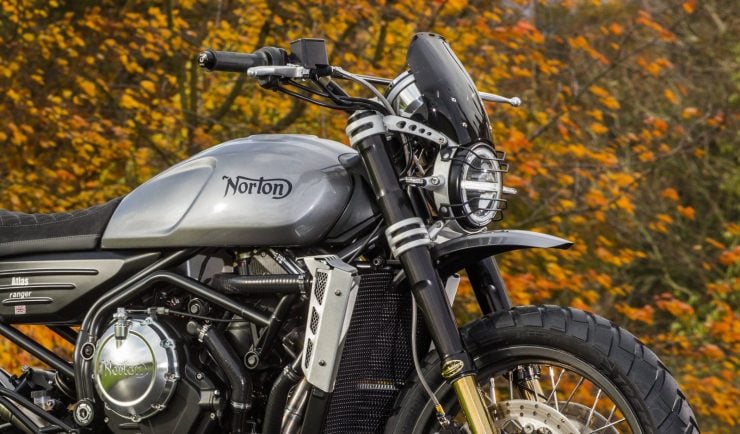
#1 – The New Norton Atlas Ranger Scrambler
Editor’s Note: The new Norton received almost 20% more web traffic on Silodrome than any other motorcycle in 2018 – all the more impressive when you note that it was published in November and had far less time to accumulate hits.
The new-for-2019 Norton Atlas Ranger is the latest addition to the line-up from the storied British motorcycle manufacturer that was rescued by Stuart Garner in 2008, and has gone from strength to strength since.
To cut to the chase for those of you who don’t have time for a full read – the Norton Atlas Ranger is lighter, more powerful, and (likely) faster on and off-road than any scrambler built today in the under 1-liter category by the major manufacturers. Only 250 of them will be made, and the MSRP is a rather reasonable £11,995.
